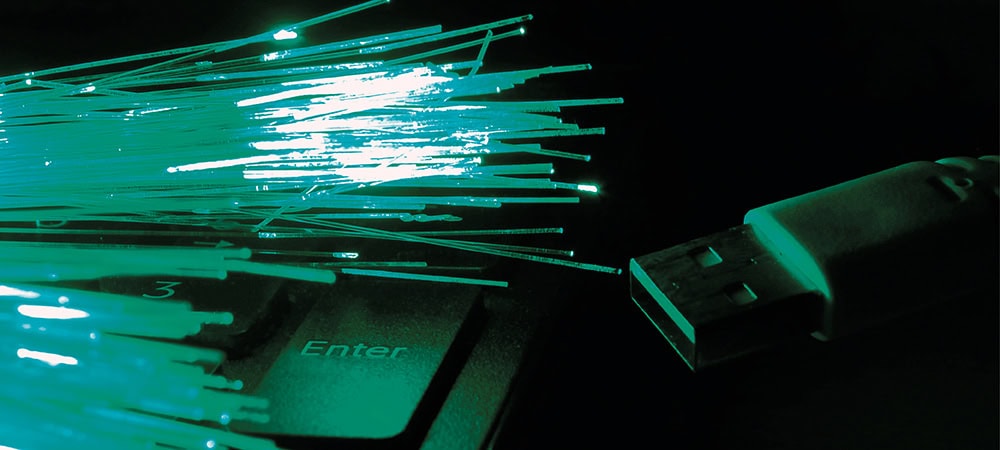Clean Core


Successful SAP ERP has always involved a combination of standard software and customization. SAP's industry solutions and add-ons and modifications from customers and SAP partners were used to adapt a standard business program to the specific requirements and preferences of the user.
The wide range of Z modifications, Abap programs, and ERP add-ons is as diverse as life itself. Consequently, SAP customers require significant experience and proven partners to customize, streamline, and orchestrate their ERP systems effectively, ensuring they remain current and prepared for future releases. Modifications have always been and will continue to be a standard feature. A select group of SAP partners have the requisite knowledge of ERP-compatible enhancements in line with the clean core concept. In an E3 interview, Victor Lozinski, the founder of the successful SAP partner LeverX, explains: The SAP clean core concept offers companies significant advantages, providing a lean, efficient, and updatable ERP environment. By reducing customer-specific changes in the SAP core system and leveraging external services, companies can introduce new SAP innovations more rapidly and cost-effectively.”
Business Technology Platform
This approach guarantees seamless upgrades, minimizes system disruption, and bolsters business agility. "LeverX's proficiency in implementing BTP-based enhancements and leveraging SAP's cloud computing ensures that our customers benefit from a clean core while maintaining their distinctive business processes," adds Victor Lozinski.
There are numerous rules, programs, and procedures involved in an S/4 conversion. What is special about clean core for the SAP community? Clean core is special in the context of S/4 Hana because it focuses on reducing customizations in the ERP core and focuses on leveraging BTP for side-by-side enhancements. "This approach ensures that the system remains stable and optimized for future upgrades by leveraging SAP's continuous enhancements without the need for extensive rework," explains Victor Lozinski. "The LeverX team supports this conversion with comprehensive clean core methods and tools that simplify and streamline the conversion process."
For SAP customers with R/3 and ECC 6.0, customizations were a crucial factor in differentiating their ERP from the competition. The clean core approach does not entail the complete elimination of all customizations or the forfeiture of competitive advantages. Instead, it represents a shift in the methods used to achieve customization and differentiation. It is crucial to recognize that S/4 Cloud provides a foundation for customers to leverage cutting-edge technologies such as artificial intelligence, machine learning, the Internet of Things (IoT), and RPA (robotic process automation).
SAP provides quarterly updates in the cloud, offering customers the latest features, performance improvements, and compliance changes. Victor Lozinski adds: "By following SAP's standard upgrade path with a clean core, companies benefit directly from these innovations and updates without the need for extensive customization."

Co-founder and
Chairman of the Board,
LeverX

Member of the Management Board,
Customer Services and Delivery,
SAP

Head of Global Information Management,
Festo

SVP and General Manager ASC BTP Solution Area,
SAP
In an exclusive interview with E3 magazine, a highly successful and long-standing SAP customer shared insights on the company's Abap and clean core strategy. "Following the successful go-live on S/4 Hana, Festo is now focusing intensively on the topic of clean core in the context of our IT strategy," explains Jörn Weigle, Head of Global Information at Festo. "Our goal is to define the optimal way for Festo to future-proof the architecture around our ERP. At the same time, we have already launched a large-scale training initiative to equip our Abap developers with the necessary expertise in the new extension technologies."
For the SAP community, it is an important triad: clean core, BTP, and Abap. Some members of the SAP community see the clean core as a frozen core and therefore the end of further ERP development. Does this mean the end of innovation? "No," says Victor Lozinski, "a clean core does not mean the end of innovation. Rather, it changes the way in which innovations are implemented. By decoupling custom development from the ERP core, companies can more easily leverage emerging technologies such as AI, ML, IoT, and RPA via SAP BTP."
At the DSAG Annual Congress 2024 in Leipzig, SAP Executive Board member Thomas Saueressig stated that the digital transformation is not yet complete: "Waiting is not the answer." In addition to S/4 Hana, SAP has developed a triad of solutions, including clean core, BTP, and Abap modifications, to address these challenges. This provides a framework and a roadmap that can extend well beyond 2040. The BTP framework represents a composable enterprise approach that can be future-proofed thanks to clean core. In a discussion with E3 Magazine, Thomas Saueressig highlighted that SAP's clean core approach is a key element of the company's long-term IT system optimization strategy. The objective is to streamline the deployment of SAP S/4 Hana through standardization and minimal adjustments.
Clean core and S/4 conversion
When does a clean core project begin: before, during or after the S/4 conversion? E3 Magazine asked the LeverX founder. "Ideally, a clean-core project begins before the S/4 conversion in the Prepare phase, as described in the SAP Activate methodology," defines Victor Lozinski. "At LeverX, we support this early analysis and planning and help customers identify customizations that can be made with SAP BTP or within SAP S/4 Hana. Starting a clean-core project early avoids or minimizes reworking, simplifies future upgrades, and allows companies to adopt new SAP innovations faster and ensure that the new system remains efficient and easy to manage."
For Victor Lozinski, as well as for SAP customer Festo, meticulous preparation for the S/4 conversion and cloud transformation is of paramount importance. Lozinski: "Yes, organizational preparation is crucial. A clean core project not only has an impact on the IT department, but also on business processes and user practices. Change management, process adaptation, and employee training are crucial."
It is crucial for both IT and the business units to manage the clean core/BTP project together. In most cases, the responsibility falls to ERP architects, CIOs, and governance teams, as Victor Lozinski has observed in his professional experience. "At LeverX, we can help companies set up governance frameworks and provide strategic guidance to ensure a consistent approach to clean core management," adds the LeverX founder. From an economic perspective, this should reduce the total cost of ownership by simplifying maintenance and updates, adds SAP manager Jan Gilg.

President and Chief Product Officer for Cloud ERP,
SAP
"The use of standard functions and cloud-based extensions via the SAP Business Technology Platform (BTP) or on-stack is intended to reduce system complexity. This can lead to faster innovation cycles, lower maintenance costs and improved system performance," says Jan Gilg, President & Chief Product Officer for Cloud ERP, describing the clean-core potential and he specifies in the E3 interview: "The clean-core approach is intended to give companies more flexibility. Fewer adjustments to the core system allow a faster response to new business requirements or technological developments. This is particularly relevant for the transition to cloud-based solutions."
SAP provides a comprehensive range of resources, including the SAP Business Technology Platform, best practices, methodologies, and partner support programs. The LeverX team utilizes these resources and incorporates its own best practices and tools to guarantee seamless project implementation. Flexibility, sustainability, and innovation are the key to success. The clean-core approach is designed to enable an organization to adapt to new requirements while maintaining manageability.
Victor Lozinski adds: "Our team prioritizes these values and integrates them into our clean core solutions for the long-term success of our customers. LeverX has deep technical knowledge, industry expertise, delivery methodologies, and a people-centered approach to innovation. We also utilize various practices to ensure complete alignment of projects with our clients' current and potential future goals, whether through SAP AppHaus, which ensures alignment with innovation, or through the application of comprehensive change management practices, or both."
Jan Gilg from SAP also highlighted the long-term advantages of a unified and coordinated approach to modifications in the discussion with E3. "From a technical perspective, clean core aims to create a standardized ERP basis that takes full advantage of SAP S/4 Hana. This can improve performance, security and scalability, and facilitate integration with other SAP solutions. SAP sees the clean core approach as an important factor for the future viability of companies. For both local and cloud installations, it should create the basis for long-term competitiveness and adaptability."
In his keynote speech at a LeverX event in Miami, Florida, in October 2024, Markus Albrecht, SAP General Manager of the ASC BTP Solution Area, highlighted the need for new frameworks and roadmaps to meet the accelerated pace of IT development. By leveraging GenAI and cloud computing based on SAP BTP, these requirements can be effectively managed and controlled. Consequently, change management will be an ongoing necessity throughout the S/4 and BTP conversion process. Does a clean core project fall under the purview of change management? Victor Lozinski answers: "Yes, a clean core project requires significant change management, which has an impact on development practices, user acceptance, and leadership alignment."
Change Management
Firstly, the application of clean core principles reduces disruption during system updates, allowing management to focus more on strategic goals than system maintenance. Processes standardization ensures better coordination between departments, leading to better collaboration and efficiency as teams work on a unified system. Technologically, a clean core simplifies the system architecture, which reduces the risk of integration issues and improves system performance. In addition, the latest SAP functions and innovations can be introduced more quickly and without major adjustments. For Victor Lozinski, it is important that a clean core reduces the costs of maintenance, system downtime, and complex upgrades. The ROI results from the faster introduction of innovations, improved system stability, and lower operating costs.
In order to reduce operating costs in an SAP environment, customers also need an appropriate organizational structure. Does this mean the CCoE (Customer Center of Expertise) could play a central role in clean core for SAP customers in the future? Victor Lozinski has a clear opinion on this: "Yes, the CCoE will play a central role in the management of clean core projects. LeverX helps to establish these centers and provides governance methods and tools to support customers in achieving and maintaining a clean core." The CCoE is responsible for enablement, governance, and communication. These centers ensure compliance with the clean core principles, provide technical guidance, and coordinate with partners such as LeverX for ongoing updates. "From our side, we work with the CCoEs to ensure strategic alignment and project success," Lozinski emphasizes again in the interview with E3.
However, the lack of personnel and resources can present challenges in the deployment of a CCoE for SAP customers. The LeverX founder was asked by E3 Magazine whether the clean core tasks of the CCoE could also be outsourced. He replied with: "Yes, LeverX offers comprehensive services to support or fully manage the clean core initiatives, from creating a governance framework to providing expertise for implementation."
A clean core is a strategic approach that will remain a key consideration beyond 2030. Despite a potential decline in migration projects, the principles of a clean core will continue to inform future SAP developments and customer-specific enhancements. "Which is why we at LeverX will continue to support our customers in this development," says Victor Lozinski, explaining the current and future situation of the SAP community. LeverX offers a range of initiatives, including roadshows, events and workshops, to provide insights into its clean core concept. "We also use tools that simplify clean core projects and the development of strategies with client companies," concludes LeverX founder Victor Lozinski.







3 Kommentare
Meike
Vielen Dank für diesen informativen Artikel! Die Clean Core-Strategie zeigt eindrucksvoll, wie wichtig es ist, bei der Entwicklung von ERP-Systemen klare Strukturen zu schaffen und gleichzeitig die Flexibilität zu bewahren. Der Ansatz, den Kern schlank und standardisiert zu halten, ermöglicht uns bei Qvitech (https://www.qvitech.com) nicht nur effizientere Upgrades, sondern fördert auch die Agilität und Anpassungsfähigkeit. Diese Kombination aus Struktur und Flexibilität ist essenziell, um ERP-Systeme zukunftssicher und nachhaltig zu gestalten. Ein sehr wertvoller Beitrag – bitte mehr davon!
W Krantz
Wünschenswert wäre neben Clean Core auch ein „Packaged Core“, was SAP ggf. forcieren kann. Mit BTP möchte man nicht unbedingt nur Systeme integrieren und reine Z Lösungen bauen. Oft fehlen nur einzelne Kundenfeatures in den Standard Apps, 90% tun im Standard. Auf BTP hat man erstmal nichts verfügbar, muss also zwingend zurück ins S4HANA oder ECC und dort erweitern, alternativ komplexe API einrichten, die auch ggf. zu erweitern sind. Ein Beispiel ist die Asset Configuration Control /nCCM2. Man findet die EA-IPPE als Softwarekomponente, kann man sich ins BTP einspielen. Darüber findet man im S4HANA Core das CCM2 Coding mit sehr breiter Paketschnittstelle, nicht gekapselt. Eine schicke UI5 App dazu findet man aktuell ( 2023 ) noch nicht. Was man sich vorstellt, ist ein gekapseltes CCM2 Paket, einzeln installierbar in der BTP, wie die iPPE jetzt auch schon. Ggf. gleich noch eine gekapselte RESTful App fürs UI dazu. Ziel wäre ein Boutique-Prinzip für SAP Kernfunktionen. Auch ein voll gekapseltes Standard Case & Records Management für BTP Kundenanwendungen darauf wäre spannend.. Nennen wir’s S4HANA installable Microservices.. Replizieren mit SLT in der Websockets Version böte sich dafür unmittelbart an. Die vorhandene SAP Coding Infrastruktur ist fast perfekt, warum nicht voll nutzen im BTP..
Siarhei Valenda
Vielen Dank für Ihre durchdachten und detaillierten Ausführungen zum Konzept des „Packaged Core“. Dies ist in der Tat eine wertvolle und innovative Idee, vor allem, wenn Kunden oder Partner, die diese Erweiterungen entwickeln, bereit sind, en Gedanken der gemeinsamen Nutzung ihrer Differenzierung zu unterstützen. Es könnte einen neu ausgerichteten Vermarktungsansatz erfordern, aber die potenziellen Vorteile sind immens.
Ihr Vorschlag für einen Boutique-Ansatz für SAP-Kernfunktionalitäten mit installierbaren Microservices und vorgefertigten RESTful-Apps passt perfekt zu der steigenden Nachfrage nach Flexibilität und Modularität in der heutigen IT-Landschaft. Solche Lösungen könnten Unternehmen stark dabei unterstützen, auf individuelle Anforderungen einzugehen und gleichzeitig das Kernangebot der SAP beizubehalten.
Der SAP Store wurde entwickelt, um einige dieser Lücken zu schließen und BTP-Paketlösungen anzubieten, die auf spezifische Geschäftsszenarien zugeschnitten sind. Wenn wir untersuchen, wie diese Ideen mit den Strategien der SAP übereinstimmen, und wenn wir mögliche Herausforderungen identifizieren, ergeben sich interessante Möglichkeiten für Innovation und Zusammenarbeit.
Wir würden diese Diskussion gerne fortsetzen – Kontaktieren Sie uns oder oder teilen Sie uns Ihre Gedanken dazu mit, wie wir diese Konzepte gemeinsam vorantreiben können.
Ich freue mich auf Ihre Rückmeldung.
Vielen Dank!